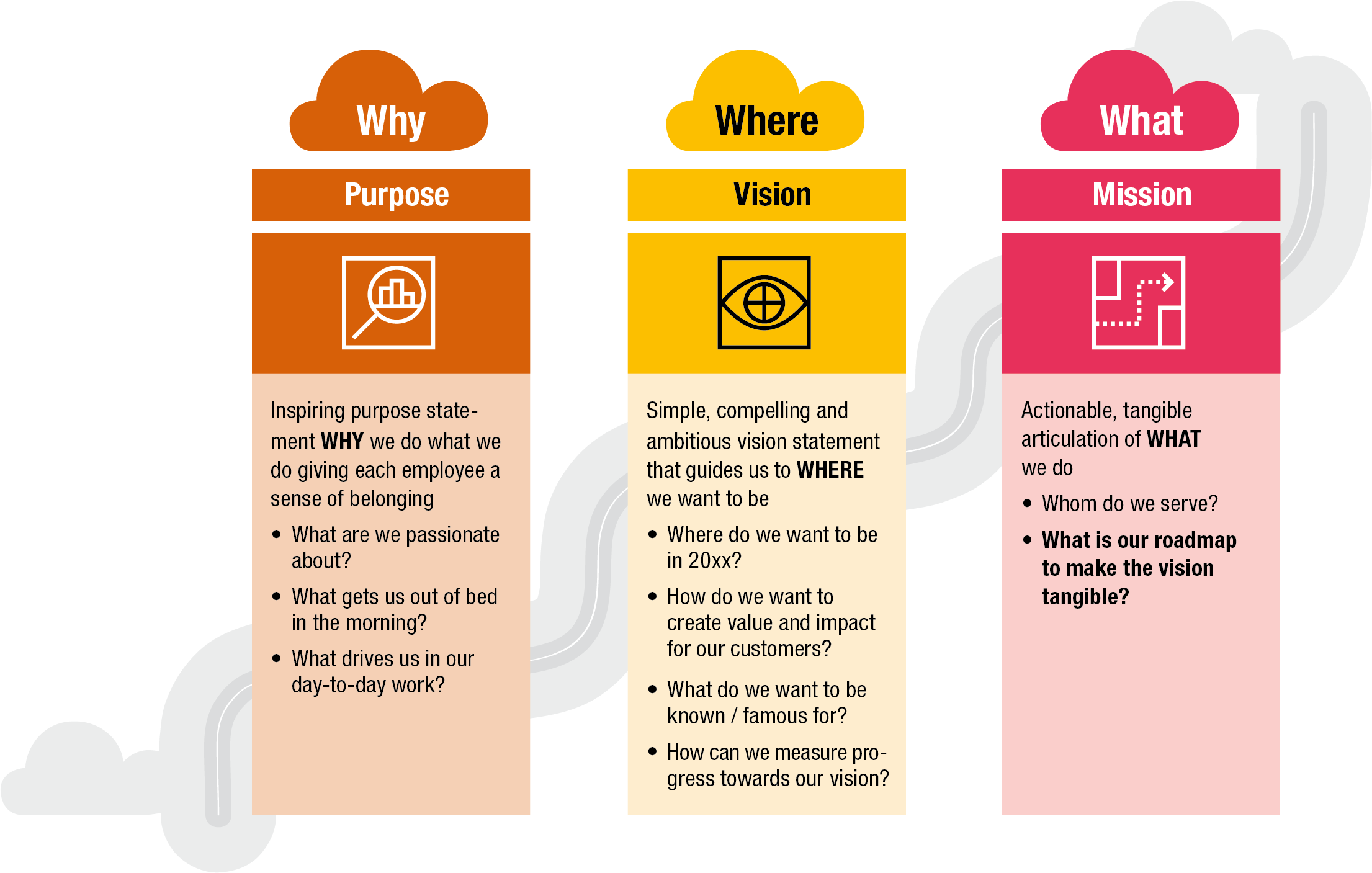In this, the second article of our series, we look at the paramount importance of purpose ‒ an oft-underrated “people” factor that turns out to be crucial when translating fine-sounding plans on paper into effective and sustained organisational change.
As Simon Sinek’s best-selling leadership book suggests, if you want to inspire lasting change within your organisation, it is crucial to ‘Start with WHY’. Many employees are not just motivated by their monthly pay check or what they do in their job, but actually why they do it. The answer to this question is what gives each individual employee a reason to get up in the morning, inspires them to bring their full energy to their work and provides them with a deeper sense of belonging and meaning.
But what is purpose? A purpose is about serving something or someone besides ourselves. Whilst individuals can gain motivation from a purpose focused on their team, company or society, the purpose of the organisation is usually about improving the situation of their customers or broader society.
An inspiring purpose unique to your organisation will energise employees to produce their best work. Not only that, but it will align the efforts of everyone within the organisation to work towards the same goal. And it will help attract the kind of people whose individual motivation matches the cause of the company.
How do you define and establish your company purpose?
When we work with clients, we help them define their company purpose (why we do what we do), together with their vision (where we want to be in the next 5-10 years) and mission (what we do to bring this to life). We are aware that the definition of the terms “purpose” and “mission” can vary, and that they are often used interchangeably. In these articles we define them as two distinct terms.

The purpose and vision statement usually has a long-term horizon. The company strategy and mission, geared to the medium term, can then be formulated and aligned in a second step.
So, what does a good company purpose look like? It should be inspiring and belief-driven, strike a balance between aspiration and precision, and be broader than the company’s activities. A good example is the purpose statement of JobCloud, Switzerland’s leading digital recruiting platform: Love What You Do – We Make Employment Happen.
How to get buy-in?
What we often experience is that companies have a purpose, but employees do not know about it or do not buy into it. Often this is because the purpose has been defined by the management team in isolation and employees were not able to co-create. In other words, they were not able to contribute their thoughts on why they get up in the morning and how they see their organisation contributing to the bigger picture.
Tips on formulating your PVM (Purpose, Vision, Mission)
While the actual route to a PVM might be slightly different for each organisation, a general principle to keep in mind is to include your employees in the journey to defining your future purpose. This will increase their engagement and buy-in. Here is an approach we have found to work:
- Put together a diverse, cross-functional core team of people who are motivated to take the lead on the topic.
- Invite people from the whole organisation and each level to contribute to the PVM, emphasising that it is their opportunity to directly shape and influence the company’s future purpose, vision and mission.
- Conduct a series of workshops where you formulate the statement that will make up your future PVM.
- Work in an agile, iterative approach. Produce a couple of statements, vote on the preferred option and then test the first version with the whole organisation. This ensures a view of each of the terms that is aligned across the company.
- After a couple of weeks’ reflection, you will most likely have regained enough perspective to be able to bring the statements to the next level and conclude the final wording of your PVM.
- Now implement your company PVM in various initiatives (strategy, definition of yearly objectives, marketing, recruitment, etc.) to really embed it throughout the organisation.
Where do you stand?
If you have not yet defined your company’s purpose, vision and mission, we encourage you to go on this journey. In this article we have suggested a few steps to making it a success.
If you have already defined a purpose, vision and mission, this might be the time to take a critical look at it. What percentage of your employees believe in your organisation’s purpose? How did you go about creating your PVM – did the management team define it by themselves or did employees throughout the whole organisation have the chance to contribute? Answer these questions honestly and you might start to understand why your organisational change initiatives might not be taking root quite as you had hoped.
What's next?
The upcoming article will focus on the topic of culture and its meaning. The article will answer the following question “How can focusing on your culture lead your organisation to greater success?”.






